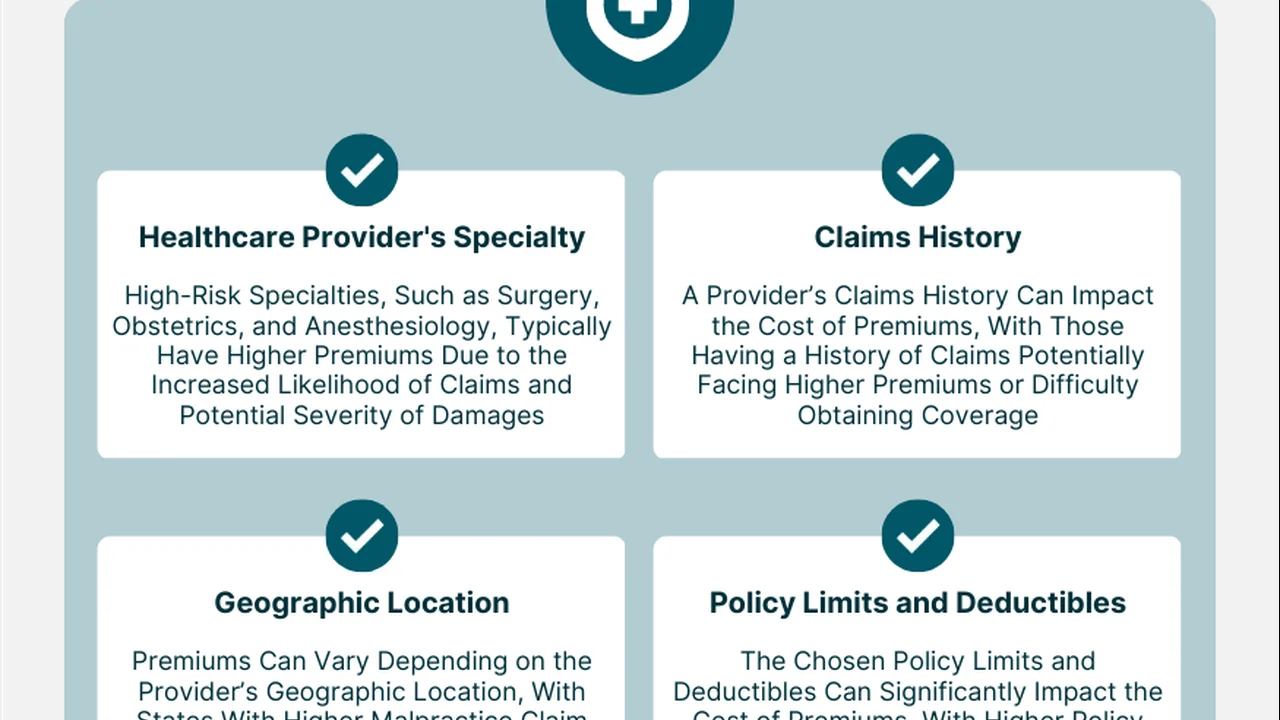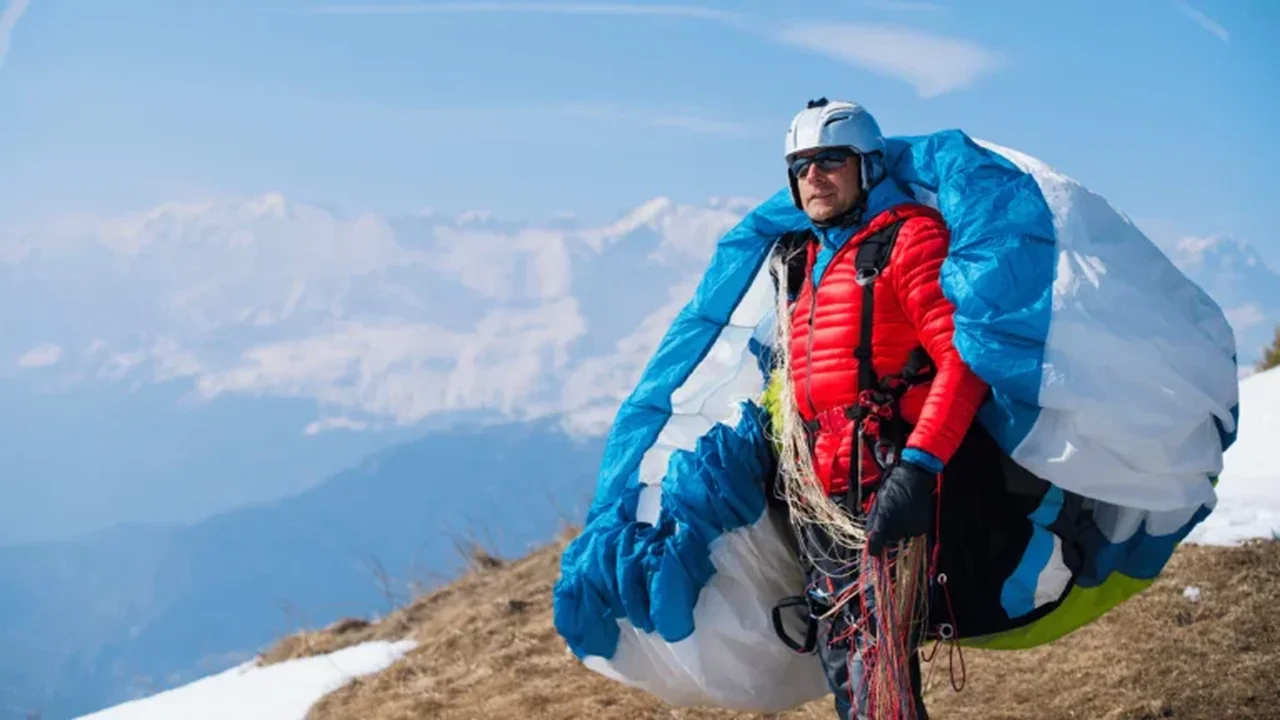5 Reasons You Need High-Risk Insurance Even with Travel Insurance
Participating in high-risk activities? Don't risk financial ruin due to inadequate insurance. Discover 5 reasons why you need dedicated high-risk insurance. Protect yourself from financial risks.

Understanding High-Risk Activities and Why Standard Travel Insurance Falls Short
So, you're planning an epic adventure – maybe skydiving over the Swiss Alps, scaling a sheer rock face in Yosemite, or white-water rafting down the Zambezi. Awesome! But before you pack your bags and chase those adrenaline rushes, let's talk about something less thrilling but equally important: insurance. You might be thinking, "Hey, I've got travel insurance, I'm covered, right?" Well, not necessarily. Standard travel insurance policies often exclude or severely limit coverage for activities deemed "high-risk."
What exactly constitutes a "high-risk activity"? Generally, it includes anything that involves a significantly higher-than-average chance of injury or death. Think extreme sports, activities in remote or dangerous locations, and anything requiring specialized skills or equipment. This can include:
- Skydiving and BASE jumping
- Rock climbing and mountaineering
- Scuba diving (especially deep-sea or cave diving)
- White-water rafting and kayaking (especially in challenging rapids)
- Motorcycle touring (particularly off-road or in unfamiliar areas)
- Helicopter skiing or snowboarding
- Paragliding and hang gliding
The reason standard travel insurance shies away from these activities is simple: risk. Insurance companies are in the business of managing risk, and high-risk activities significantly increase the likelihood of a claim. Therefore, they either exclude these activities altogether or offer very limited coverage, often with high deductibles and strict limitations.
Reason 1: Medical Expenses Coverage for High-Risk Injuries
Imagine you're tearing down a mountain bike trail when you take a nasty spill, breaking your arm and needing immediate medical attention. Or, while scuba diving, you experience decompression sickness and require hyperbaric chamber treatment. These scenarios can result in hefty medical bills. Standard travel insurance may cover some medical expenses, but it often has limitations on the types of treatments covered, the maximum payout, and even the location where you can receive treatment. High-risk insurance, on the other hand, is specifically designed to cover injuries sustained during these activities, often with higher coverage limits and broader coverage for specialized treatments and medical evacuation.
Let's look at some real-world examples:
- Scenario: A rock climber falls and sustains a severe head injury. They require helicopter evacuation from the mountain and extensive hospital care.
- Standard Travel Insurance: May deny the claim due to the high-risk nature of rock climbing or impose a low coverage limit that doesn't cover the full cost of evacuation and treatment.
- High-Risk Insurance: Typically covers the full cost of medical evacuation and treatment, including specialized care like neurosurgery and rehabilitation.
- Scenario: A scuba diver experiences decompression sickness in a remote location. They need immediate hyperbaric chamber treatment, which is expensive and requires specialized facilities.
- Standard Travel Insurance: Might not cover hyperbaric chamber treatment or may only cover it up to a certain limit, leaving the diver with a significant out-of-pocket expense.
- High-Risk Insurance: Often includes specific coverage for hyperbaric chamber treatment, ensuring the diver can receive the necessary care without facing financial hardship.
Product Recommendation: Consider World Nomads Explorer Plan. It specifically covers a wide range of adventure activities, including rock climbing, scuba diving, and even some forms of mountaineering. The medical coverage is robust, and they offer 24/7 emergency assistance. The price varies depending on your trip length and destination, but generally ranges from $100-$300 for a two-week trip.
Reason 2: Emergency Evacuation and Repatriation Coverage for Remote Locations
Many high-risk activities take place in remote and challenging environments. If you get injured in the backcountry while hiking, or experience a medical emergency while diving in a secluded reef, getting you to a hospital can be a logistical nightmare. Standard travel insurance may not cover the cost of emergency evacuation from these locations, which can involve helicopters, specialized rescue teams, and long-distance transportation. High-risk insurance typically includes comprehensive emergency evacuation coverage, ensuring you can get the medical attention you need, no matter where you are.
Furthermore, if you require repatriation back to the US for further treatment, standard travel insurance may impose strict limitations or exclude this coverage altogether. High-risk insurance often includes repatriation coverage, ensuring you can return home safely and comfortably.
Consider these situations:
- Scenario: A kayaker capsizes in a remote river and sustains a spinal injury. They need to be airlifted to the nearest hospital, which is several hours away.
- Standard Travel Insurance: May not cover the cost of helicopter evacuation, leaving the kayaker responsible for a significant bill.
- High-Risk Insurance: Covers the full cost of helicopter evacuation, ensuring the kayaker can receive timely medical attention.
- Scenario: A mountaineer suffers a severe injury on a remote peak and requires repatriation back to the US for specialized care.
- Standard Travel Insurance: May not cover the cost of repatriation or may impose a low coverage limit, forcing the mountaineer to pay a significant portion of the expenses.
- High-Risk Insurance: Covers the full cost of repatriation, including medical escort and specialized transportation.
Product Recommendation: Global Rescue is a premium provider specializing in emergency evacuation and medical assistance. While pricier (starting around $300 for a short trip), it provides unmatched coverage, including extraction from remote locations and transport to your hospital of choice. Ideal for extreme adventurers venturing far off the beaten path.
Reason 3: Gear and Equipment Protection for Specialized Activities
High-risk activities often require specialized gear and equipment, which can be expensive and difficult to replace. Think about the cost of a high-end climbing rope, a professional-grade scuba diving regulator, or a custom-built mountain bike. If your gear is lost, stolen, or damaged during your trip, standard travel insurance may offer limited coverage, often with low payout limits and strict requirements for proving the value of the equipment. High-risk insurance can provide more comprehensive coverage for your gear, ensuring you can replace it quickly and get back to your adventure.
For instance:
- Scenario: A scuba diver's expensive underwater camera is flooded during a dive.
- Standard Travel Insurance: May not cover the damage to the camera, especially if it's deemed to be caused by negligence or improper use.
- High-Risk Insurance: May cover the cost of repairing or replacing the camera, allowing the diver to continue capturing stunning underwater images.
- Scenario: A rock climber's climbing gear is stolen from their vehicle while they are out on a climb.
- Standard Travel Insurance: May offer limited coverage for stolen items, but the payout may not be enough to replace all the climbing gear.
- High-Risk Insurance: May cover the full cost of replacing the stolen climbing gear, allowing the climber to continue their trip without having to worry about equipment costs.
Product Comparison: Consider comparing World Nomads (mentioned above) against a policy from Divers Alert Network (DAN) if you're primarily concerned with scuba diving. DAN's policies often have specific coverage for diving equipment and related incidents. While DAN is more niche, their expertise in diving makes them a strong contender.
Reason 4: Cancellation and Interruption Coverage Tailored to Adventure Travel
Unexpected events can derail your adventure plans, forcing you to cancel or interrupt your trip. Standard travel insurance may offer cancellation and interruption coverage, but it often has limitations on the reasons for cancellation and the amount of reimbursement you can receive. High-risk insurance can provide more comprehensive coverage, specifically tailored to the unique challenges of adventure travel. For example, it may cover cancellation due to adverse weather conditions, natural disasters, or political instability in your destination – events that are more likely to impact adventure travelers.
Examples of where this is helpful:
- Scenario: A planned mountaineering expedition is cancelled due to a sudden avalanche risk.
- Standard Travel Insurance: May not cover the cancellation, as avalanche risk may not be a covered reason.
- High-Risk Insurance: May cover the cancellation, allowing the mountaineer to recoup their non-refundable expenses.
- Scenario: A white-water rafting trip is interrupted due to a sudden flood.
- Standard Travel Insurance: May not cover the interruption, as flooding may not be a covered reason.
- High-Risk Insurance: May cover the interruption, allowing the rafters to receive reimbursement for unused portions of their trip.
Product Recommendation: Look into policies that offer "Cancel For Any Reason" (CFAR) upgrades. While these add to the cost, they provide the most flexibility. Companies like Allianz Travel Insurance often offer CFAR options. Be aware that CFAR typically reimburses a percentage of the trip cost (e.g., 75%), not the full amount.
Reason 5: Personal Liability Protection for Accidents and Injuries
Accidents happen, even to the most experienced adventurers. If you accidentally injure someone or damage property during your high-risk activity, you could be held liable for significant damages. Standard travel insurance may offer limited personal liability coverage, but it often has low payout limits and may not cover all types of claims. High-risk insurance can provide more comprehensive personal liability protection, ensuring you are covered against legal expenses and potential settlements.
This is relevant in cases such as:
- Scenario: A skier accidentally collides with another skier, causing them a serious injury.
- Standard Travel Insurance: May offer limited personal liability coverage, but the payout may not be enough to cover the injured skier's medical expenses and lost wages.
- High-Risk Insurance: May offer more comprehensive personal liability coverage, ensuring the skier is protected against potential lawsuits and settlements.
- Scenario: A climber accidentally dislodges a rock, which damages a nearby car.
- Standard Travel Insurance: May not cover the damage to the car, as it may be considered an act of negligence.
- High-Risk Insurance: May cover the damage to the car, protecting the climber from financial liability.
Product Recommendation: Check the fine print for liability coverage within your chosen high-risk policy. IMG (International Medical Group) is another strong contender in the travel insurance space, and their policies often include decent liability coverage. Compare the liability limits offered by different providers to ensure you're adequately protected.
Choosing the Right High-Risk Insurance: Key Considerations
Selecting the right high-risk insurance policy requires careful consideration of several factors:
- Activities Covered: Ensure the policy specifically covers the activities you plan to participate in. Don't assume that all policies cover the same activities. Read the fine print carefully.
- Coverage Limits: Choose a policy with adequate coverage limits for medical expenses, emergency evacuation, gear protection, cancellation/interruption, and personal liability. Consider the potential costs of these events and choose coverage limits that will adequately protect you.
- Exclusions: Be aware of any exclusions in the policy. Some policies may exclude coverage for certain pre-existing conditions, activities performed without proper training, or activities performed in violation of local laws.
- Reputation and Customer Service: Choose a provider with a good reputation and a proven track record of providing excellent customer service. Read online reviews and compare customer satisfaction ratings.
- Cost: Compare the cost of different policies and choose the one that offers the best value for your money. Don't simply choose the cheapest policy; consider the coverage limits and exclusions as well.
General Tips:
- Read the fine print: This cannot be stressed enough. Understand what is and isn't covered.
- Compare multiple policies: Don't settle for the first policy you find. Get quotes from several providers and compare their coverage, exclusions, and cost.
- Disclose all relevant information: Be honest about your activities and medical history when applying for insurance. Failure to disclose relevant information could result in a denied claim.
- Keep your policy information readily available: Carry a copy of your policy information with you, and make sure someone at home knows where to find it.
Investing in high-risk insurance is an essential part of planning any adventure trip. It provides peace of mind, knowing that you are protected against the financial consequences of unexpected events. So, before you take the plunge, make sure you have the right insurance in place to protect yourself and your adventure.
:max_bytes(150000):strip_icc()/277019-baked-pork-chops-with-cream-of-mushroom-soup-DDMFS-beauty-4x3-BG-7505-5762b731cf30447d9cbbbbbf387beafa.jpg)






